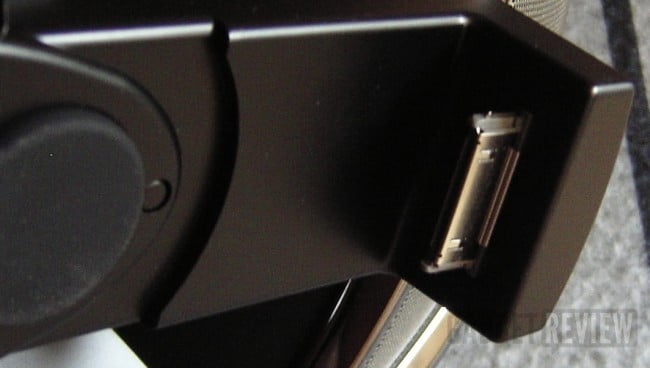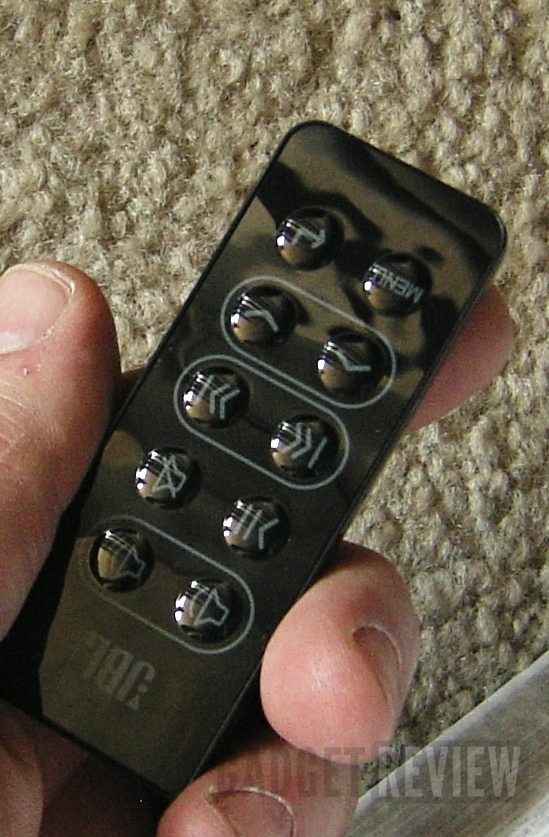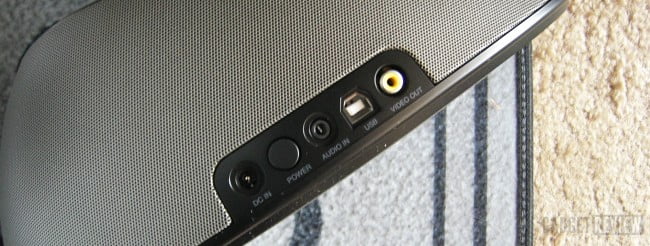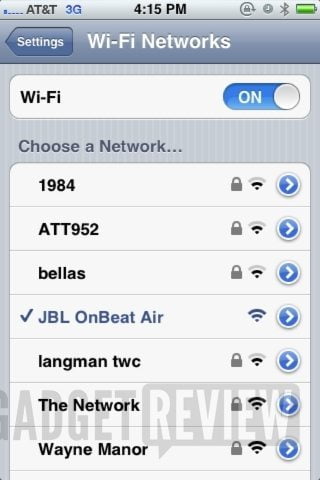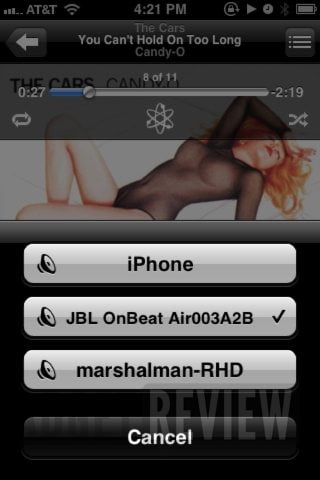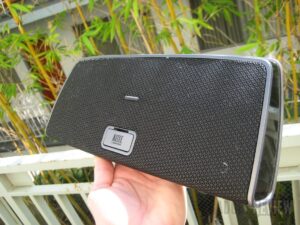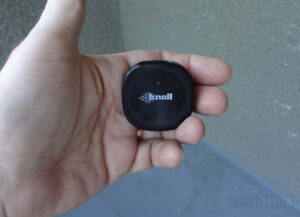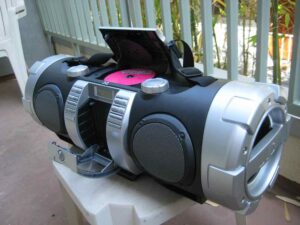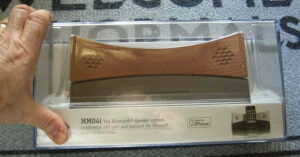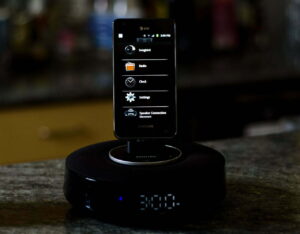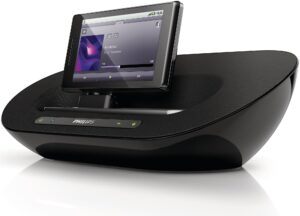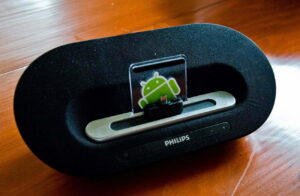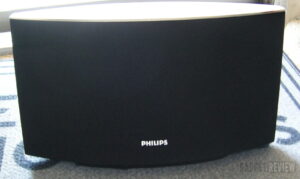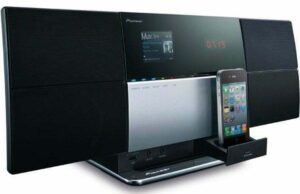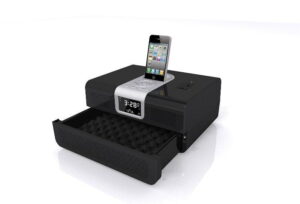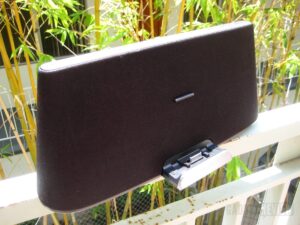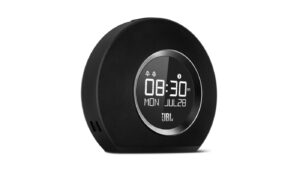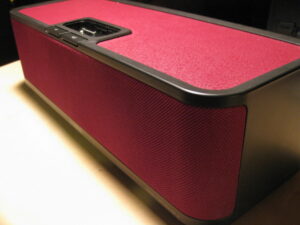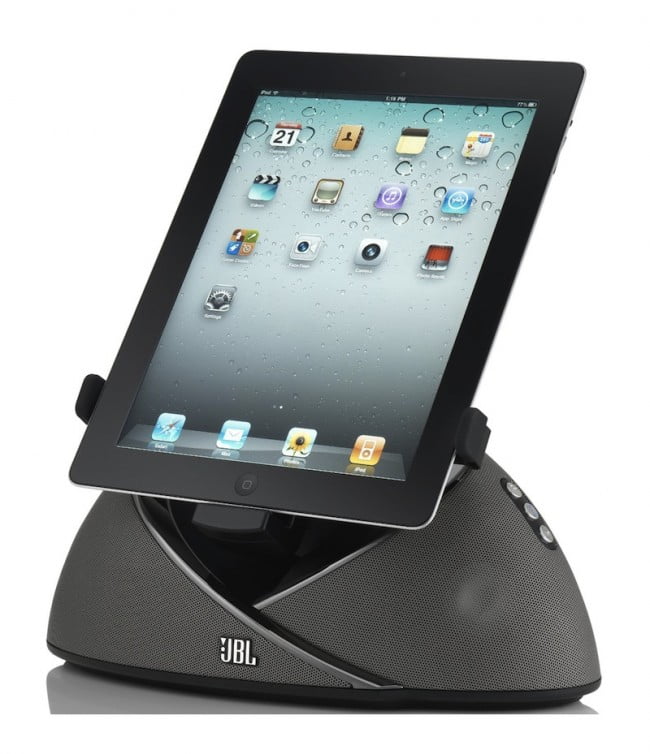
What makes a “home theater” is defined by what the person wants it to be. For many, having a whole set of components strewn throughout a room isn’t practical — free-standing surround speakers, no way! But most would agree that you need more than just an HDTV at one end of the room to make a “home theater.” Especially since today’s TVs are woefully lacking in amplification and speaker quality. Speaking of quality, check out our review of some of the best speakers on the market. There’s no shortage of quality with these guys.
But what I left out is that the video and/or audio source is also a vital component for a “home theater” and one that can not be ignored. Audio, in particular often comes from digital devices such as mobile phones, tablets, and even iPods — as opposed to recorded content on disc.
So okay, we have these digital devices that output audio but not a lot of room but we still want good audio that can be “home theater” worthy. Don’t give up. Get JBL’s OnBeat Air. Or, get good alternatives like what you will find in our JBL Charge 3 Speaker review and JBL Charge 4 review.
Now let’s get two things out of the way: first, unlike the Doss wireless Bluetooth portable speaker, it’s a docking station but any comparison between it and other docks can be forgotten. Partly that’s due to the shape, and there’s some extremely high-end audio tech inside. This includes the speakers.
Let’s take that shape first. It bridges the gap between a squarish box and an oval shape, with a graphite-like “weave” pattern that gives the distinctive shape a touch of class. The internal digital amplifier puts out 7.5 watts of power per channel (stereo) and it, combined with the speakers gives the dock enough “heft” to stay in place once put down on a surface.
There’s an articulated dock in the middle that can hold an iPhone/iPod or yes, even a tablet. Obviously, the Apple-specific connector on its bottom holds the i-device in place as well as provides the syncing. The dock can be rotated to the right for horizontal viewing and will click into place. — but using it with a tablet requires the addition of the included plastic bar for stabilization.
Related: Also check out our JVC Kaboom RV NB50 iPod Boombox review.
The right side gives you Up/Down volume control, with a center button enabling the “Airplay” wireless audio streaming (and provides a visual indicator of when it’s active). “Airplay” only works with devices that have built-in Apple technology, like the iMainGo X. So, this is not something that can be updated into a product at a later time. A remote can be used as well and is included to perform added functions for controlling the music as it’s played.
Setting the JBL OnBeat Air up is fairly simple: besides plugging the power brick into the back, you’ll need to either plug an Apple device into the dock or use the audio mini-jack input on the back (which works with any mobile audio device). Because the power button must be pressed to activate the dock, a loss of power will shut it off. Since this will also require reactivating “Airplay” (more on that in a bit), those who have an uninterruptible power supply (UPS) in their home theater area will find this a good place for the JBL to be positioned, Or perhaps consider getting one for this use specifically ONe advantage of having the dock near your main display (HDTV or front projector) is that the Composite video output on the back can be connected to an amplifier’s input or directly to one of the HDTV’s inputs. Keep in mind that video can only be outputted from what is connected to the dock — there are no video inputs on the JBL OnBeat Air. The USB port on the back is not for inputting from a thumb drive — it’s for syncing the Apple device in the dock with your computer (allowing you to access your iTunes library).
Now if you don’t want to use the Apple dock, or plug an audio source into the back-mounted mini-jack audio input, you have the option of using “Airplay.” This technology works through the home network, but requires a setup that, while not involved, will take a bit of time to get right. You’ll press the button between the two-volume buttons so that it begins to blink. This is followed by using an Apple device, say an iPhone, to locate the JBL OnBeat Air’s network signal it is putting out. After connecting to this network, you then enter the details of your home network, such as your name and password. Once finished, the button is now a solid white and you can return to your home network on the Apple device being used.
The JBL OnBeat Air will now show up as an option to select from the “Airplay” icon that is part of the recent iOS Apple devices used. So you can select it from an iPhone and then stream music to the JBL OnBeat Air. You can also do this from the iTunes program on a computer. The JBL OnBeat Air is using the B/G standard for wireless, but since there’s no video involved, this is more than fast enough to handle the audio streaming and buffering issues.
That takes care of what to do outside, but it’s what inside the JBL OnBeat Air that counts: a dual set of JBL Phoenix transducers are inside — since the dock is designed to be used with digital music files, DSP optimization is designed to provide a frequency range of 70Hz – 20kHz. How this sounds is evident the minute audio starts coming through.
Because there are two things you notice pretty immediately: one is that there is a surprising amount of “separation: between the speakers — that is to say the stereo effect. I used a lot of The CARS tunes here, because they feature really good stereo separation, and the JBL OnBeat Air didn’t muddy the stereo effect or muffle the vocals. Secondly, the amount of bass that is discernible is surprising for its size– there is no subwoofer inside, but the feeling of “depth” at the lower range is there in sufficient quantities to aid in making the audio sound much more dynamic than similarly sized audio docks. This is also true when streaming audio using “AirPlay” as well.
Editor’s Rating:
[rating:4/5]
Great
Bottom line: $249 retail buys you more than just the convenience of “AirPlay” and an Apple dock with the JBL OnBeat Air. There’s a real quality to the audio being outputted — one significantly worth listening to when digital music’s less than stellar resolution is being played. Making the JBL OnBeat Air part of your “home theater” is a wise move for those whose HDTV has been lonesome all this time. And it’s a great addition to any other space as well.
Pros
- Dynamic sound output
- Holds tablets
- Wireless audio streaming reception
Cons
- Composite video output only
- No subwoofer output
